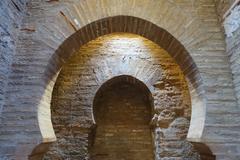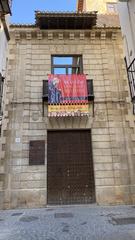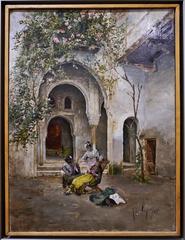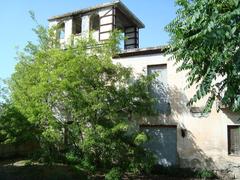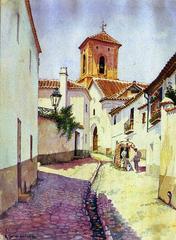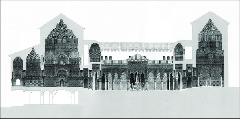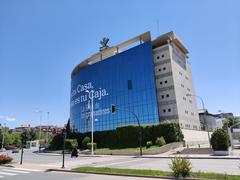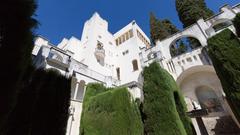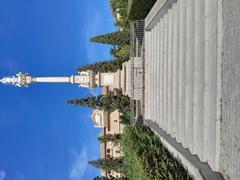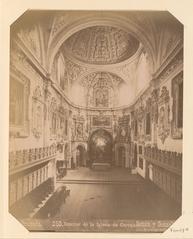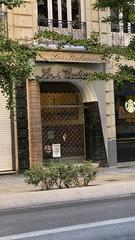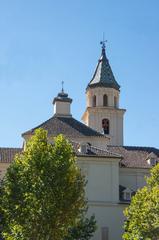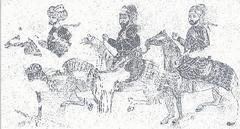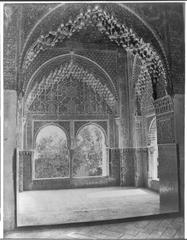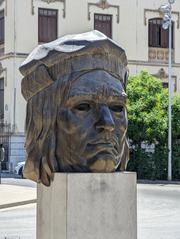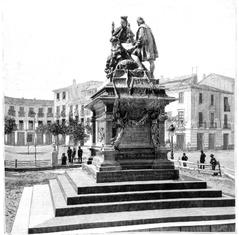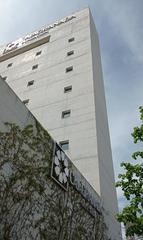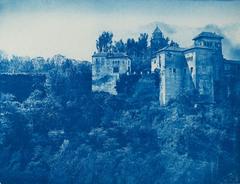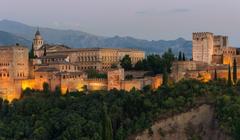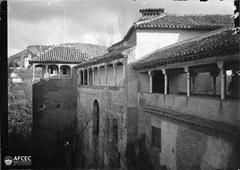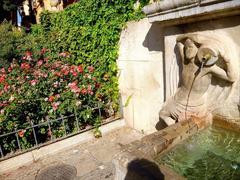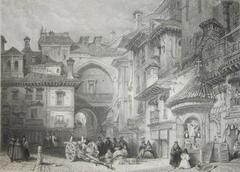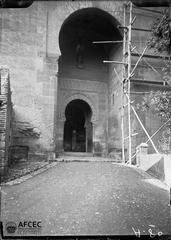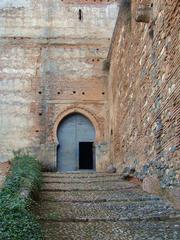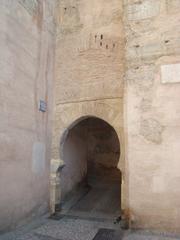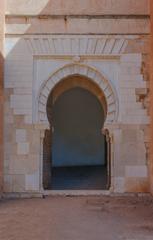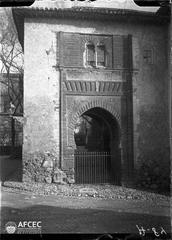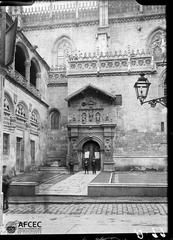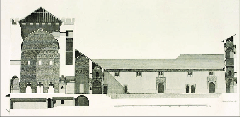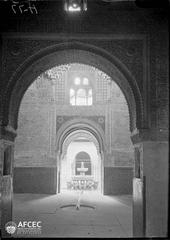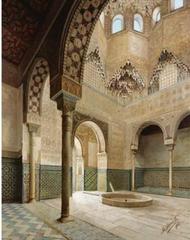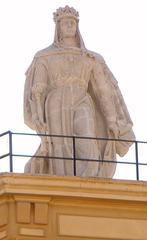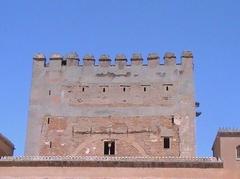
Madrasah of Granada: Complete Guide to Visiting Hours, Tickets, and Historical Highlights
Date: 04/07/2025
Introduction: The Madrasah of Granada and Its Enduring Legacy
The Madrasah of Granada is an architectural and cultural jewel in the heart of the city, offering a rare window into the intellectual and artistic achievements of Islamic Spain under the Nasrid dynasty. Founded in 1349 by Sultan Yusuf I, the Madrasah was the first public university in Granada and stands today as the only surviving Islamic university building in Spain. Its history reflects Granada’s complex, multicultural past, where Muslim, Christian, and Jewish communities exchanged knowledge and contributed to a vibrant intellectual atmosphere.
Strategically positioned near the former Great Mosque (now the Cathedral) and the historic Alcaicería Market, the Madrasah’s architecture is a testament to Nasrid artistry—featuring a central courtyard, exquisite stucco decoration, and the iconic horseshoe arches of Andalusian Islamic design. Despite significant transformations after the Christian conquest in 1492, including its conversion into the Casa del Cabildo (city hall), essential elements of its original design have been preserved and thoughtfully restored.
Managed today by the University of Granada, the Madrasah serves as a venue for cultural and academic events, hosting exhibitions, lectures, and guided tours. This guide provides all you need to plan your visit: from up-to-date visiting hours and ticket details to historical context and travel tips. For further information, consult official tourism portals and university resources (Granada City Council; Official Madrasah Website; Wikipedia).
Historical Overview
Nasrid Foundation and Role
Founded in 1349 by Yusuf I, the Madrasah of Granada was envisioned as a “temple of knowledge,” designed to make Granada a beacon of scholarship in the Islamic West. The institution thrived at the intellectual heart of the Nasrid kingdom, offering instruction in theology, law, philosophy, mathematics, astronomy, and medicine. Its extensive library and prominent scholars—such as Ibn al-Khatib and Ibn Zamrak—reflected an era of remarkable academic vitality (LoveGranada; World City Trail).
Architectural Features
The original Madrasah harmonized function and beauty with its central patio, arcaded galleries, oratory (mihrab), and elaborate stucco work. The oratory stands as the best-preserved Nasrid element, with its horseshoe arch entrance, intricate geometric decoration, and signature mocárabe (stalactite) ornamentation. Light and space were ingeniously used to foster reflection and learning (Andalucia.com).
Transformation and Modern Adaptations
After the Christian conquest, the Madrasah was repurposed—its Islamic library destroyed and much of its original décor replaced by Baroque elements. The building served as the city hall and underwent 18th-century renovations, yet retained its core Nasrid layout. In the 20th and 21st centuries, restoration efforts have uncovered and conserved many original features, and the building now houses the Royal Academy of Fine Arts and serves as a hub for cultural events (Junta de Andalucía).
Visitor Information
Location and Access
- Address: Calle Oficios, s/n, 18001 Granada, Spain
- Getting There: The Madrasah is centrally located near the Cathedral, Royal Chapel, and Alcaicería Market. It is easily accessible by foot or city bus lines 8, 21, 33, C31, C32, and C33. Public parking is limited in the historic center; use public transport when possible (inspain.org).
Opening Hours
- Monday–Friday: 8:00 am–8:00 pm
- Closed: Weekends and public holidays
- Note: Hours may change during holidays or special events. Always check the official website before your visit.
Admission and Tickets
- Entry: Free of charge
- Guided Tours: Available with local guides, often as part of city walking tours. Special thematic tours may be offered seasonally (inspain.org).
- Special Events: The Madrasah regularly hosts exhibitions, lectures, and cultural programs—check the event schedule for details.
Accessibility
- The building is partially accessible for visitors with reduced mobility. Ramps are provided, but some historic areas may be difficult to access. Visitors with special needs should contact the site in advance to arrange accommodations.
What to See: Highlights of the Madrasah
Oratory (Mihrab)
The Nasrid oratory is the Madrasah’s crown jewel, featuring:
- Horseshoe arch entrance
- Intricate stucco and geometric patterns
- Octagonal cupola with mocárabe ornamentation
- Original Arabic inscriptions celebrating knowledge and enlightenment
Courtyard and Ancillary Spaces
The central patio, surrounded by arcaded galleries, was once the heart of academic life. While much has changed, the spatial design still reflects its original purpose as a hub for scholarship and community.
Baroque Façade and Interior
The current façade and grand staircase are products of the 18th-century Baroque renovation, harmoniously blending with surviving Nasrid elements. Display cases showcase original marble fragments and architectural details.
Academic and Cultural Spaces
The Madrasah houses the Royal Academy of Fine Arts and the University’s Centre of Contemporary Culture, which regularly host artistic and scholarly events.
Visitor Tips and Etiquette
- Photography: Allowed without flash; some areas may have restrictions to protect heritage features.
- Respect: Do not touch historic surfaces or decorations.
- No food/drink: Consumption inside is prohibited.
- Keep noise to a minimum, especially during academic events or tours.
- Wear comfortable shoes for walking on cobblestones.
Nearby Attractions
Combine your visit with other iconic sites nearby:
- Granada Cathedral and Royal Chapel: Major Renaissance monuments.
- Alcaicería Market: Traditional bazaar atmosphere.
- Albaicín and Sacromonte: Explore winding streets and panoramic Alhambra views.
- The Alhambra: Pre-book tickets for this world-famous Nasrid palace (inspain.org).
FAQs
Q: What are the opening hours of the Madrasah of Granada?
A: Monday to Friday, 8:00 am–8:00 pm; closed weekends and public holidays.
Q: Is admission to the Madrasah free?
A: Yes, entry is free of charge.
Q: Are guided tours available?
A: Yes, guided tours can be booked through local guides or official tourism services.
Q: Is the building wheelchair accessible?
A: Accessibility is partial. Contact the site in advance for specific needs.
Q: Can I take photographs inside?
A: Yes, photography is allowed without flash; restrictions may apply in some areas.
Plan Your Visit and Explore Further
For current visiting hours, special events, and tour availability, consult official resources:
- Granada’s Official Tourism Portal
- InSpain.org – Palacio de la Madraza
- Spain Cultures – Granada History
Conclusion: A Living Monument to Knowledge and Culture
The Madrasah of Granada stands as a powerful symbol of Granada’s rich, multicultural heritage and its enduring commitment to knowledge and artistic achievement. Whether you are drawn by the intricate craftsmanship of Nasrid stucco, the grandeur of Baroque architecture, or the legacy of medieval scholarship, the Madrasah offers a unique and enriching experience for every visitor. Its central location and accessible entry make it an essential stop for anyone exploring Granada’s historic heart.
Download the Audiala app for audio guides, interactive maps, and up-to-date information on the Madrasah and other Granada historical sites. For the latest updates, special events, and travel tips, follow us on social media.


